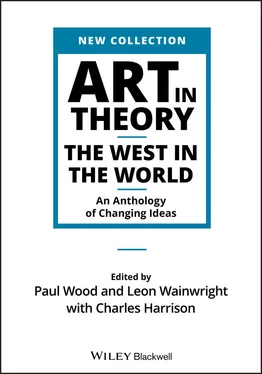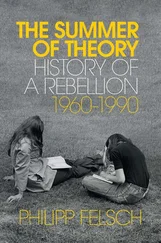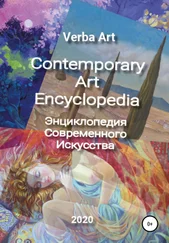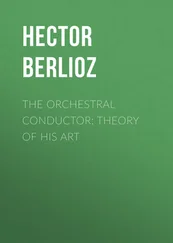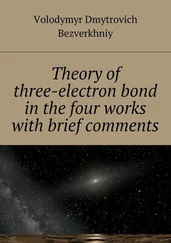This is the manner of their ceremonies and daily superstitions, worshipings of false gods, wherein the Devil hath so blinded them.
IA10 Duarte de Sande (1547–99) from ‘An Excellent Treatise of the Kingdom of China’
Duarte de Sande was a Jesuit missionary based in the Portuguese colony of Macao in the late sixteenth century. Drawing on his own experience as well as that of other Jesuits, including Matteo Ricci (cf. IA11), his account of Chinese society at that time was regarded as being of exceptional importance by Portugal’s rival, the British. Originally printed in Latin in Macao, a copy of Sande’s text was captured along with other booty by English pirates who attacked a Portuguese ship engaged in the spice trade en route to Europe in 1592. It was quickly printed in English by Richard Hakluyt in the second edition of his three‐volume account, The Principal Navigations, Voyages, Traffiques and Discoveries of the English Nation , published in 1598–1600. We have made selections from Sande to complement those from Ricci on Chinese ‘mechanical arts’. The present extracts discuss precious metals, silk, spices and porcelain. They are taken from Peter Mancall (ed.), Travel Narratives from the Age of Discovery: An Anthology , Oxford: Oxford University Press, 2006, pp. 168–70.
This region affordeth especially many sundry kinds of metals, of which the chief, both in excellency & in abundance, is gold, whereof so many Pezoes are brought from China to India, and to our country of Japan, that I heard say, that in one and the same ship, this present year, 2000 such pieces consisting of massie gold, as the Portuguese commonly call golden loaves, were brought unto us for merchandise: and one of these loaves is worth almost 100 ducats. Hence it is that in the kingdom of China so many things are adorned with gold, as for example, beds, tables, pictures, images, litters wherein nice and dainty dames are carried upon their servants’ backs. Neither are these golden loaves only brought by the Portuguese, but also great plenty of gold‐twine and leaves of gold: for the Chinese can very cunningly heat and extenuate gold into places and leaves. There is also great store of silver, whereof (that I may omit other arguments) it is no small demonstration, that every year there are brought in to the city commonly called Cantam by the Portugal merchants to buy wares, at the least 400 Sestertium thereof, and yet nothing in a manner is conveyed out of the Chinese kingdom: because the people of China abounding with all necessaries, are not greatly inquisitive or desirous of any merchandise from other kingdoms … But now let us proceed unto the Silk or Bombycine [silken] fleece, whereof there is great plenty in China: so that even as the husbandmen labor in manuring the earth, and in sowing of Rice; so likewise the women do employ a great part of their time in preserving of silk‐worms, and in keeming [combing] and weaving of Silk. Hence it is that every year the King and Queen with great solemnity come forth in to a public place, the one of them touching a plough, and the other a Mulberry tree, with the leaves whereof Silk‐worms are nourished: and both of them by this ceremony encouraging both men and women unto their vocation and labor: whereas otherwise, all the whole year throughout, no man besides the principal magistrates, may once attain to the sight of the king. Of this Silk or Bombycine fleece there is such abundance, that three ships for the most part coming out of India to the port of Macao, & at the least one every year coming unto us, are laden especially with this freight, and it is used not only in India, but carried even unto Portugal. Neither is the Fleet it self only transported thence, but also divers & sundry stuffs woven thereof, for the Chinese do greatly excel in the Art of weaving, and do very much resemble our weavers of Europe. Moreover the kingdom of China aboundeth with most costly spices & odors, and especially with cinnamon [albeit not comparable to the cinnamon of Zeilan [Ceylon?] with camfer also & musk, which is very principal & good. Musk deriveth his name fro[m] a beast of the same name (which beast resembleth a Beaver) fro[m] the parts whereof bruised & putrefied proceedeth a most delicate & fragrant smell which the Portuguese highly esteem … Let us now entreat of that earthen or pliable matter commonly called porcelain, which is pure white, & is to be esteemed the best stuff of that kind in the whole world: whereof vessels of all kinds are very curiously framed. I say, it is the best earthen matter in all the world, for three qualities; namely, the cleanness, the beauty, & the strength thereof. There is indeed other matter to be found more glorious, and more costly, but none so free from uncleanness, and so durable: this I add, in regard of glass, which indeed is immaculate and clean, but may easily be broken in pieces. This matter is digged, not throughout the whole region of China, but only in one of the fifteen provinces called Quiansi, wherein continually very many artificers are employed about the same matter neither do they only frame thereof smaller vessels, as dishes, platters, salt‐sellers, ewers, and such like, but also certain huge tunnes and vessels of great quantity, being very finely and cunningly wrought, which, by reason of the danger and difficulty of carriage, are not transported out of the realm, but are used only within it, and especially in the king's court. The beauty of this matter is much augmented by variety of picture, which is laid in certain colors upon it, while it is yet new, gold also being added thereunto, which maketh the foresaid vessels to appear more beautiful. It is wonderful how highly the Portuguese do esteem thereof, seeing they do, with great difficulty, transport the same, not only to us of Japan and into India, but also into sundry provinces of Europe.
IA11 Matteo Ricci (1552–1610) from his journal
Matteo Ricci was a leading figure in the Jesuit mission to China in the late sixteenth century. After his training in Rome, Ricci joined the mission to India, arriving in Goa in 1578. He moved on to China four years later and remained there for the rest of his life. Crucially, he learned to speak and write Chinese. During his work for the mission he kept a journal in Italian. After his death, this was translated into Latin by another Jesuit scholar, Father Nicola Trigault, and published at Rome in 1615. It was in turn quickly translated into French, German, Spanish and English. Ricci’s account, along with that of his fellow Jesuit Duarte de Sande, provided the first detailed report of China to appear in Europe since Marco Polo’s Travels three centuries earlier. Importantly, Ricci introduced the philosophy of Confucius to a European audience for the first time (cf. IC16). However, for purposes of the present anthology, and to complement Sande’s account of precious metals, silk and porcelain (cf. IA10), we have made our selections from Chapter 4 of Book I of Ricci’s journal, ‘Concerning the Mechanical Arts among the Chinese’. In this, he covers a wide range of subjects including architecture, music, drama, printing and calligraphy as well as painting and sculpture; throughout, he draws comparisons with Europe. Our extracts are taken from China in the Sixteenth Century: The Journals of Matthew Ricci 1583–1610 , translated from the Latin by Louis J. Gallagher S. J., New York: Random House, 1953, pp. 19–25.
It is a matter of common knowledge, borne out by our own experience, that the Chinese are a most industrious people, and it may be logically concluded from the foregoing chapter that most of the mechanical arts flourish among them. They have all sorts of raw material and they are endowed by nature with a talent for trading, both of which are potent factors in bringing about a high development of the mechanical arts … It should be noted that because these people are accustomed to live sparingly, the Chinese craftsman does not strive to reach a perfection of workmanship in the object he creates, with a view to obtaining a higher price for it. His labor is guided rather by the demand of the purchaser who is usually satisfied with a less finished object. Consequently they frequently sacrifice quality in their productions, and rest content with a superficial finish intended to catch the eye of the purchaser….
Читать дальше
